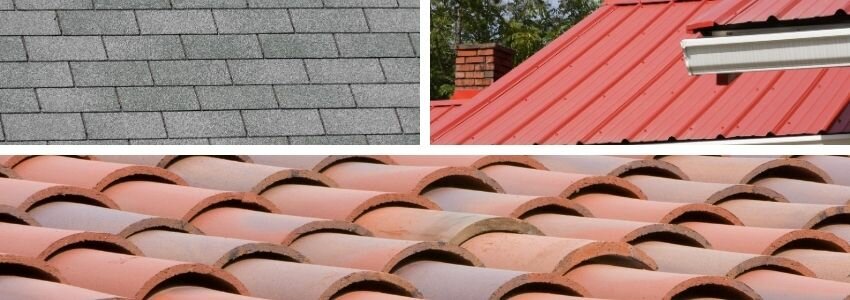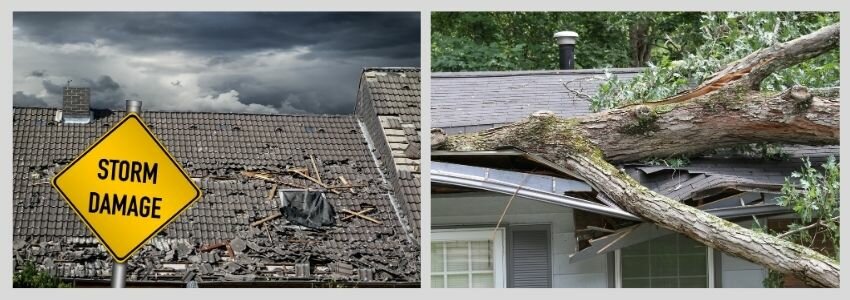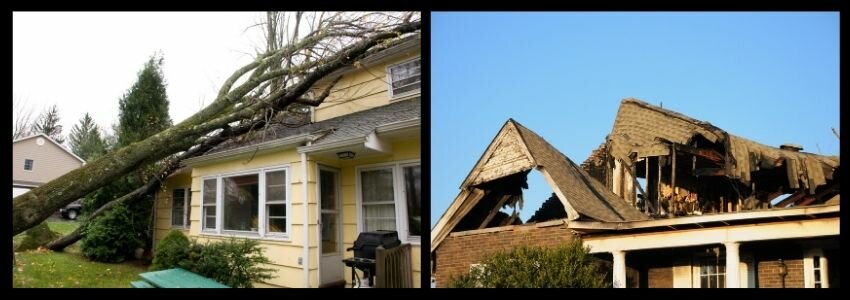The decision to replace your roof in Utah is a significant one, with factors that can influence not only the condition of your home but also your future plans. Whether you’re considering a roof replacement to enhance your property or contemplating selling your house in its current condition, several key points of concern, pros, and cons come into play. Here’s what you need to consider when evaluating the need for a roof replacement .
Points of Concern:
- Roof Age: The age of your roof is a primary concern. Most roofs have a lifespan of 20-30 years, and if your roof is nearing the end of its life, it’s more prone to issues.
- Leaks and Damage: Roof leaks, missing shingles, or visible damage are clear indicators that your roof requires attention. Ignoring these issues can lead to further, costly damage to your home’s interior.
- Local Climate: Utah’s climate can be harsh, with extreme temperatures and seasonal weather changes. The durability and quality of your roof should match these conditions.
- Energy Efficiency: An old or damaged roof can lead to energy inefficiency, resulting in higher utility bills.
- Future Selling Plans: If you plan to sell your home in the near future, the condition of your roof becomes a critical factor. A damaged roof can deter potential buyers and affect the sale price.
Pros of Replacing Your Roof:
- Enhanced Curb Appeal: A new roof can significantly improve the appearance of your home, making it more attractive to buyers and increasing its value.
- Reduced Maintenance Costs: A new roof requires minimal maintenance compared to an old or damaged one, potentially saving you money in the long run.
- Energy Savings: Modern roofing materials can improve energy efficiency, leading to lower utility costs and a more comfortable living environment.
Cons of Replacing Your Roof:
- Cost: Roof replacement can be a substantial investment. It’s essential to weigh the expense against the potential return on investment.
- Disruption: Roof replacement can be disruptive to your daily life, and it may take time for the project to be completed.
| Roof Type | Cost per Square (100 sq. ft.) | Additional Cost Factors |
|---|---|---|
| Asphalt Shingles | $100 – $200 | Quality, style, and warranty impact costs |
| Metal Roof | $200 – $600 | Material choice, installation complexity |
| Wood Shingles | $350 – $450 | Type of wood, location, and maintenance |
| Tile Roof | $600 – $800 | Material, weight, and design influence |
| Slate Roof | $800 – $1,200 | Quality, thickness, and location matter |
| Flat Roof | $250 – $350 | Material choice and insulation affect cost |
Selling “As Is” to a Real Estate Cash Buyer:
If you’re considering selling your house and the cost of roof replacement is a concern, selling “as is” to a real estate cash buyer is an option worth exploring. Here’s why it can provide relief:
- No Repairs Needed: Cash buyers often purchase homes in their current condition. This means you can avoid the expense and hassle of replacing the roof.
- Quick Sale: Cash buyers can often close on a property much faster than traditional buyers, providing a more expedited selling process.
- Selling Price: While you may not receive the full market value for your home when selling “as is,” the convenience and time saved can offset this difference.
Types of Roofs and Lifespan

Asphalt
The lifespan and durability of your roof depends on the type of material your roof is made of. The most common roofing material in Utah is asphalt shingles. This roofing material is made of a composite of fiberglass or felt paper base coated with a water proof layer of asphalt, topped with ceramic granules. These types of roofs have a lifespan of approximately 20 years. Asphalt is very fire retardant which makes them a great choice for roofing material. The popularity of this type of roof is largely due to the cost, they are currently the most affordable roofing option on the market. With proper care and maintenance this type of roof could last up to 30 or 40 years, however they do not hold up well in areas with high wind and areas prone to thunderstorm or hail, all of which can lead to loose shingles, potential leaking and roof damage.
Metal
Another roofing material that is more often seen in commercial or industrial buildings is made of metal. These roofs are low maintenance and lightweight and environmentally friendly. The cost of a metal roof will be much higher than asphalt but they do resist wear and tear from weather much better. Metal roofs generally last from 40-70 years though they aren’t impervious to damage from water leaks at weak areas where there are screws or overlapping metal. And some Utah residents complain about house noisy metal roofing can be when strong rain or hail storms happen.
Slate Tile
Slate or tile shingles give a home a high-end appeal and are known for their fire resistance and durability. Slate naturally resists high winds, heavy wind and hail and have a lifespan of up to 100 years! The drawback to slate tiles is the weight, they are quite heavy. Another drawback is the cost, not only the cost of the product, but the cost of the installation.
What Causes Roof Problems

Age
If you’ve run into roof problems there could be a variety of reasons, the first of which is likely due to age. If you have an asphalt shingle roof then the shingles may be getting old, weak and brittle and in need of an entire roof replacement. Roof problems can also stem from lack of upkeep and repair, paving the way for more severe damage. Taking the time to annually sweep off the roof and clear the gutters and downspouts are simple preventative measures for putting a stop to roof problems.
Snow and Ice
The weather also plays a role in roof damage, water and cold temperatures common to central and northern Utah, can wreak havoc on a roof. Through the winter snow and ice thaw and refreeze in fluctuating temperatures and as that snow melts water can seep into small holes in your roof, only to freeze again, expanding and ripping larger holes in your roof. Those holes created by freezing and thawing snow and ice create weak spots where more water can enter during the next thaw. In general a roof should be able to hold the weight of 4 feet of snow, but an older roof might not be able to handle that much.
Wind and Storms
Heavy winds, thunderstorms, hailstorms and hurricanes will all put your shingles to the test. Consider having your roof inspected after a major storm to stay on top of any small damage that could become big damage in the long run.
High Temperatures
Heads up southern Utah, UV light and high heat do effect your roof. Having a well ventilated and insulated attic will go a long way to reducing the problem.
Poor Installation
Unfortunately your roof problems could stem from an improper install. If you try to put roofing over old shingles, or fail to use underlayment and proper flashing you’re going to have leak problems sooner or later.
Common Problems With a Bad Roof

The single most common roof problem is going to be a leak. The leak could stem from cracked flashing or broken shingles being likely. Leaks often occur near a chimney or any opening in your roof such as skylights and vents, under damaged shingles, and in low spots or valleys. You’ll know you have a roof problem when you see signs of a leak including discolored ceilings or damp walls.
Another indicator of a bad roof is pooling water on the roof. This is a particular worry with flat roofs. Potential home buyers will be able to see or have it show up on a home inspection if your roof is missing shingles or asphalt shingles are nearly bare of the ceramic granules.
Cost of Repairing Roof Problems
Cost of repairing a roof due to a leak varies widely based on materials and severity of the damage. If the leak is noticeable inside your home then this will affect your potential selling price because the cost of repair will be inside and outside the home. A bad roof could mean damage in the attic in the sheetrock and insulation and possibly even electrical problems. If the problem isn’t addressed in a timely manner it can run through the walls and into light fixtures, causing more problems that need repair.
If your home is in need of an all-new roof the cost goes up even more. Using an online roof estimate calculator or contacting a roofing professional can give you an idea of how much money you would need to shell out to replace your roof before selling your home.
Should I Repair the Roof Before Selling
Choosing to repair or replace a roof before selling will always mean a higher selling price however many sellers don’t have the cash to make repairs up front. A potential home buyers would be required to purchase homeowners insurance on a damaged roof and the roof might not get coverage if the roof is too old or damaged. Roof damage is likely to scare off a lot of traditional home buyers because of the stress and money involved with roof repairs. If you don’t have the capital to fix the roof yourself before listing the home you would want to consider a house buying company so you don’t have to sell the house for a loss. Companies that purchase houses in as-is condition are used to dealing with repairs and can give you a fair offer on your home.
If you decide to sell your home with damage, reach out to a us. We are a non-traditional buyer and your top rated, local Utah house buying company! We will buy your house in any condition, saving you the fuss of making the home repairs yourself, while trusting you’ll get an honest and stress-free cash offer on your home.
Top Questions and Answers About Roof Replacement
How much does a new roof increase my home value?
The increase in home value after a new roof installation varies based on factors like your location and the roof type. However, a new roof can generally increase your home’s value by 15% to 40% of the total project cost. It’s not just about added resale value; it also enhances curb appeal and attracts potential buyers.
What factors affect the cost of a roof replacement?
The cost of a roof replacement depends on factors such as the type of roofing material, the size and complexity of your roof, your location, and labor costs. Additional factors like the removal of the old roof, necessary repairs, and insulation can also influence the cost.
Is it better to repair or replace a damaged roof?
It depends on the extent of the damage. Minor repairs can extend the life of your roof, but if the damage is widespread, frequent, or the roof is near the end of its lifespan, replacement is often more cost-effective in the long run. Consult a roofing professional to evaluate the best course of action.
How long does a typical roof replacement take?
The duration of a roof replacement project can vary. On average, it takes about 1 to 3 days for a standard residential roof replacement. More complex projects or adverse weather conditions may extend the timeline.
Does my homeowner’s insurance cover roof replacement?
It depends on your insurance policy and the cause of the damage. If the roof damage is due to a covered peril like a storm, hail, or a fallen tree, your homeowner’s insurance may cover the cost of repairs or replacement. Review your policy and consult your insurance provider for specific details.
What is the most cost-effective roofing material?
Asphalt shingles are often considered the most cost-effective roofing material. They provide a balance between affordability, durability, and a wide range of style options. However, the best choice for you depends on your budget and preferences.
Are there any energy-efficient roofing options?
Yes, many roofing materials offer energy-efficient properties. Reflective roofing materials, such as cool roofing or metal roofs, can help reduce energy consumption by reflecting heat. They can also potentially lower your cooling costs in hot climates.
Do I need a permit for a roof replacement?
Most local building codes require permits for roof replacements. The necessity of a permit varies by location and may depend on factors like the scope of work and roofing material used. It’s essential to check with your local building authority to ensure compliance with regulations.
These common questions and answers provide valuable insights for homeowners considering a roof replacement. However, each situation is unique, so it’s advisable to consult with a roofing professional to address specific concerns and make well-informed decisions about your roofing project.
